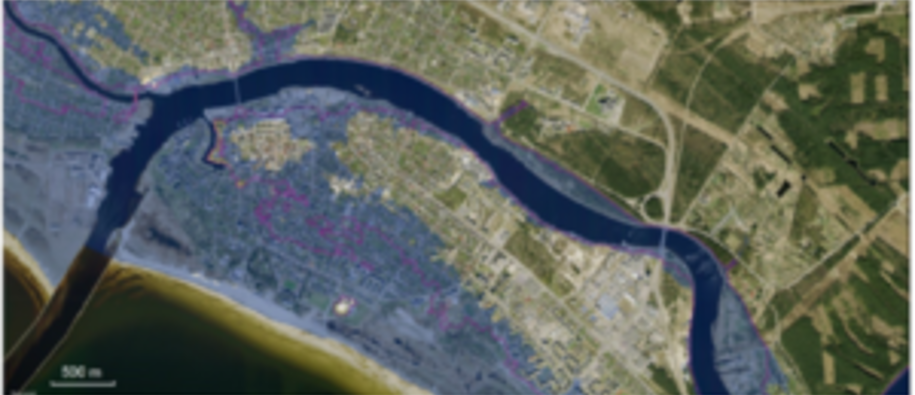Should Estonia prepare for tropical summers or severe floods in 2100 as consequences of climate change?
Adapting societies to the impact of climate change is needed to protect people, infrastructure, businesses and ecosystems. All EU countries are required to prepare, develop and implement national adaptation strategies. Estonia is currently in the process of developing its national adaptation strategy with support from Iceland, Liechtenstein and Norway.
To know more about what Estonia needs to prepare for, three Estonian research team have been analysing climate change adaptation options covering a broad variety of sectors ranging from infrastructure and energy to health and biodiversity. The projects have benefited from cooperation with colleagues in Norway and Iceland. The results from the projects were presented at a seminar in Tallinn in late April.
The basis for the analysis were two scenarios:
- Countries worldwide have moderate cooperation and cuts to green-house gas emissions
- The present state of affairs just continues with no improvements.
So what can we expect if all countries continue on the present course?
Rising sea levels
The most obvious threat for this low-lying country is the rising sea levels, particularly when it coincides with storm swells in the Baltic Sea. The floods in 2005 in the Estonian coastal towns of Pärnu and Haapsalu after the winter storms serve as a good, if mild example of what is to come. Research shows that Estonia could expect sea level rise of as much as 82 cm by 2100 in the worst scenario, although, post-glacial rebound will compensate some of this.
Researchers at the Tartu University have calculated that over 18 000 people in Estonia live in the potentially flood-affected areas at the moment. Instead of avoiding building in the risk-areas, the building sector is preferring to plan the lowest floors of the new buildings to stand some flood waters.
Antti Roose, who is heading the research team at Tartu University, hopes to continue the cooperation with their partners in the Norwegian Institute for Urban and Regional Research (NIBR) to develop flood scenarios for the coastal towns in Estonia using similar models that have already been done in e.g. Stavanger in Norway.
Higher temperatures
Another change that Estonia will need to prepare for is the rising temperatures both on land and in the sea. The environmental research centre SEI Tallinn analysed the changes in the sectors of energy and infrastructure. While the raise of temperature by max 4.9°C will result in smaller heating bills for all people, it will also mean that the temperatures in winter will fluctuate around 0°C bringing more ice to the roads and thus potentially more traffic accidents. In addition, the repeated freezing and thawing of roads is the main cause for potholes, which will lead to an increase in maintenance costs for the municipalities.
The Fridtjof Nansen Insitute in Norway has contributed to this project as a donor project partner.
Changes to biodiversity
The Estonian University of Life Sciences analysis of the changes in the natural ecosystems and the bio-economy reveal that while we can expect some species to give way to others, the overall biodiversity is likely to remain as diverse as before.
Professor Tiiu Kull emphasised the need to tackle the challenges related to intensified eutrophication – a form of water pollution – as well as the invasive species. On a more positive note, Kull reminded that drier and warmer springs will mean less mosquitoes. The summers will also be warmer, which is a good news for the tourism industry. However, Estonia had to also plan for heatwaves, which might be particularly distressing in urban areas and for elderly people.
The Agricultural University of Iceland has contributed to this project as a donor project partner.
Developing a national climate change adaptation strategy
The findings from these extensive studies will serve as a basis for a proposal for a Climate Change Adaptation Strategy and Action Plan for Estonia. The Environmental Research Centre, responsible for the compiling of the proposal, expects the proposal to be presented to the government already in 2016.
The drafting of the national climate change adaptation strategy is also supported by Iceland, Liechtenstein and Norway. The Norwegian Directorate for Civil Protection in Norway is contributing with their experience of integrating climate change adaptation into civil protection and emergency management.
Environmental programme
The projects are supported under the € 6.9 million ‘Integrated marine and inland water management’ programme in Estonia. One aspect of the programme is to contribute to the development of a strategy and measures for adaptation to climate change in Estonia.
Read more about the programme.
This article is based on contributions from the Norwegian Embassy in Tallinn, Estonia.

